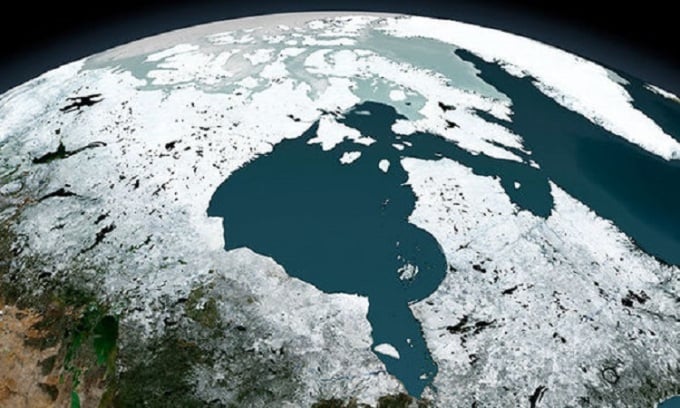Around Hudson Bay in Canada, scientists have found that everything is lighter than everywhere else.

Hudson Bay in Canada. Photo: Express
In the 1.3 million square kilometre bay, you lose about 1/25,000th of your body weight. Researchers first noticed this anomaly in the 1960s, when they were mapping the difference in the Earth's gravitational field. But it took decades to figure out why, according to the Mail.
Normally, you weigh 150.9 pounds. Near Hudson Bay, you would weigh about 150.9 pounds. The answer to this mystery starts with the fact that the gravitational force any object exerts on another object is proportional to its mass. Researchers used NASA's Gravity Recovery and Climate Experiment (GRACE) satellites to map two gravity anomalies around the Canadian Great Bay in 2007 and see how they changed over time. The Canadian gravity anomalies have long been known and are the result of crustal deformation during the last Ice Age, says physicist Dan Britt, director of the Lunar and Asteroid Surface Science Center at the University of Central Florida.
About 20,000 years ago, Canada and much of North America lay beneath the Laurentide Ice Sheet, a glacier that stretched about 2 miles (3.2 km) thick in the Hudson Bay area. The ice was heavy enough to compress the Earth’s crust. A similar process is occurring in many places with thick ice sheets. The details have to do with the viscosity of the mantle.
Under the weight of the Laurentide Ice Sheet, the Earth’s crust around Hudson Bay began to compress and sink. In doing so, it displaced some of the hot magma in the semi-liquid mantle below. The compression was strongest on either side of Hudson Bay, where two giant domes formed on the ice sheet. The gradual retreat of the Laurentide over the next 10,000 years created many of the North American landscapes, including the Great Lakes region. Some theories suggest that the displacement of molten magma reduced Earth’s gravity around Hudson Bay, but NASA’s GRACE satellite shows that’s only part of the story. The Laurentide Ice Sheet theory and GRACE data explain only about 25 to 45 percent of the difference. Scientists estimate that the remaining 55 to 75 percent is due to convection.
Beneath the Earth’s surface, a ribbon of molten rock called magma creates convection currents due to the natural rise and fall of the boiling mixture. This process pulls Earth’s tectonic plates inward, causing the mass and gravity of the Hudson Bay region to decrease. Researchers predict that gravity will gradually increase again in Canada. Geophysicist Mark Tamisiea of the Harvard-Smithsonian Center for Astrophysics in Cambridge, Massachusetts, estimates that it will take about 300,000 years for the region’s gravity to return to the global average.
An Khang (According to Mail)
Source link


![[Photo] Prime Minister Pham Minh Chinh chairs a meeting of the Government Standing Committee to remove obstacles for projects.](https://vphoto.vietnam.vn/thumb/1200x675/vietnam/resource/IMAGE/2025/10/06/1759768638313_dsc-9023-jpg.webp)



![[Photo] Prime Minister Pham Minh Chinh chaired a meeting of the Steering Committee on the arrangement of public service units under ministries, branches and localities.](https://vphoto.vietnam.vn/thumb/1200x675/vietnam/resource/IMAGE/2025/10/06/1759767137532_dsc-8743-jpg.webp)




































































































Comment (0)